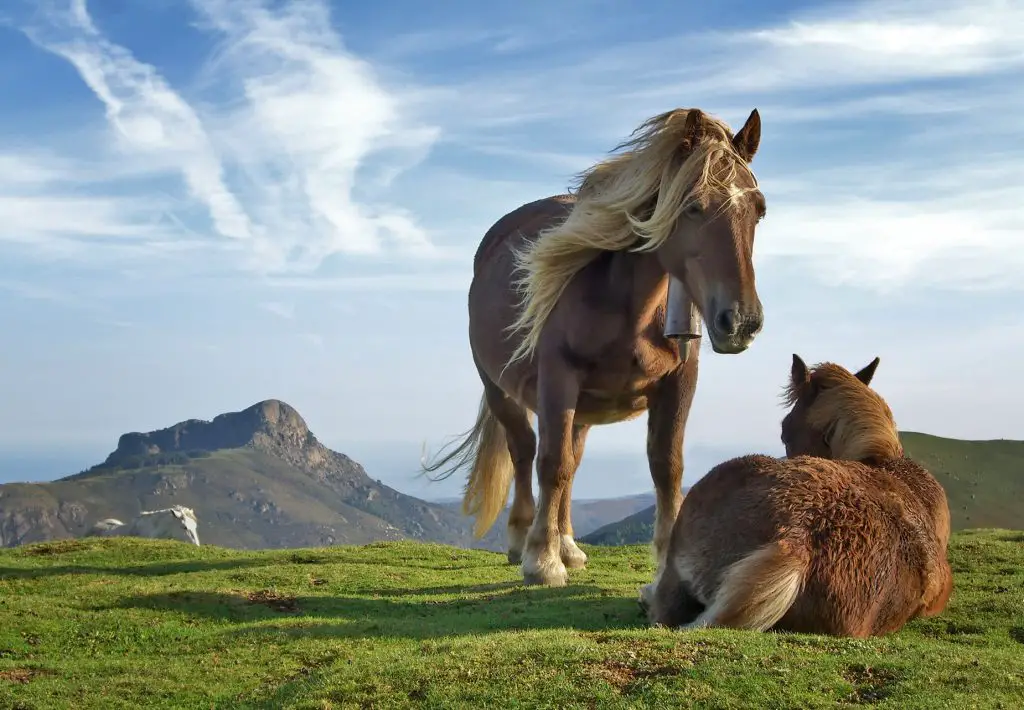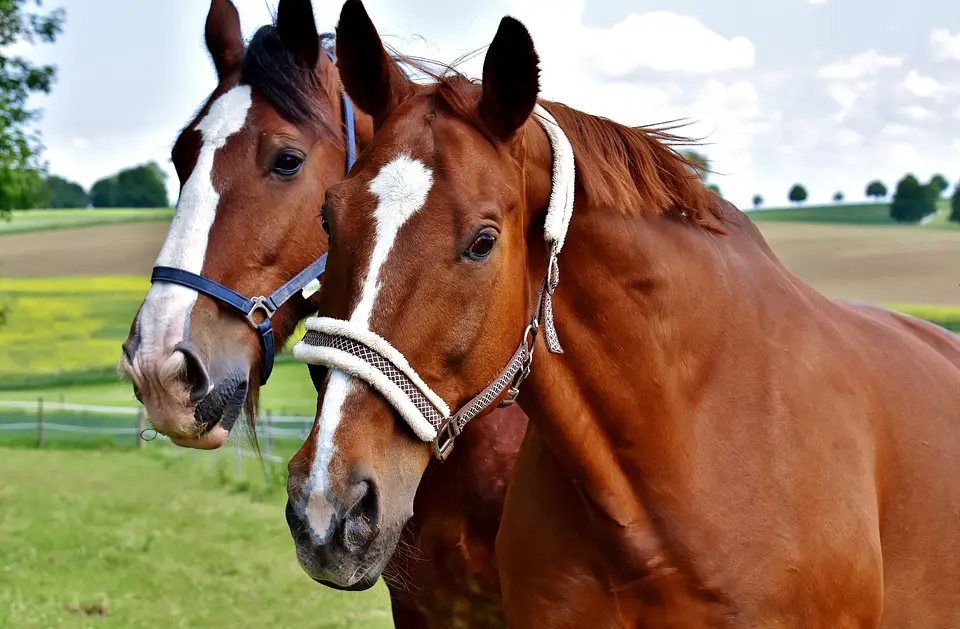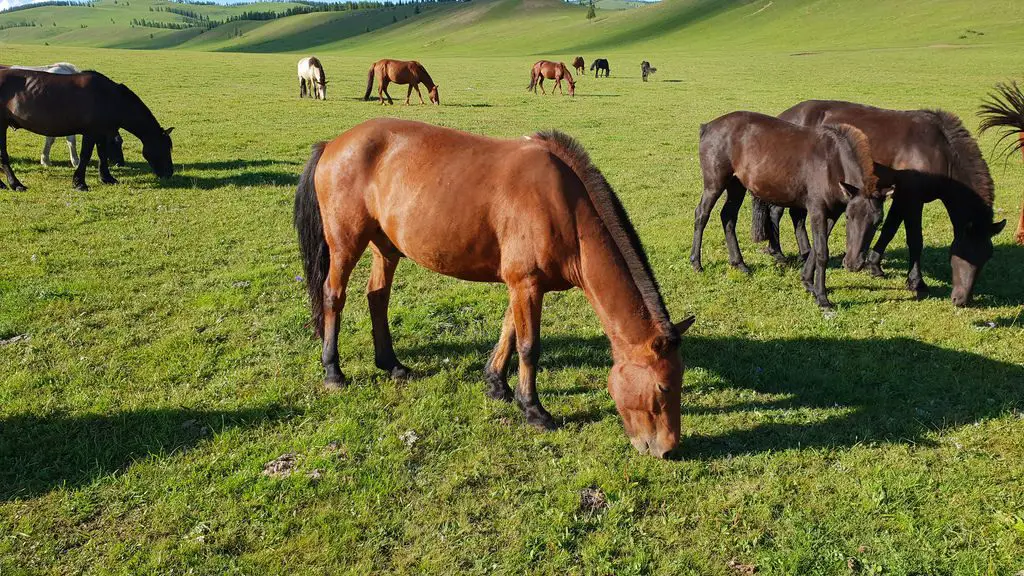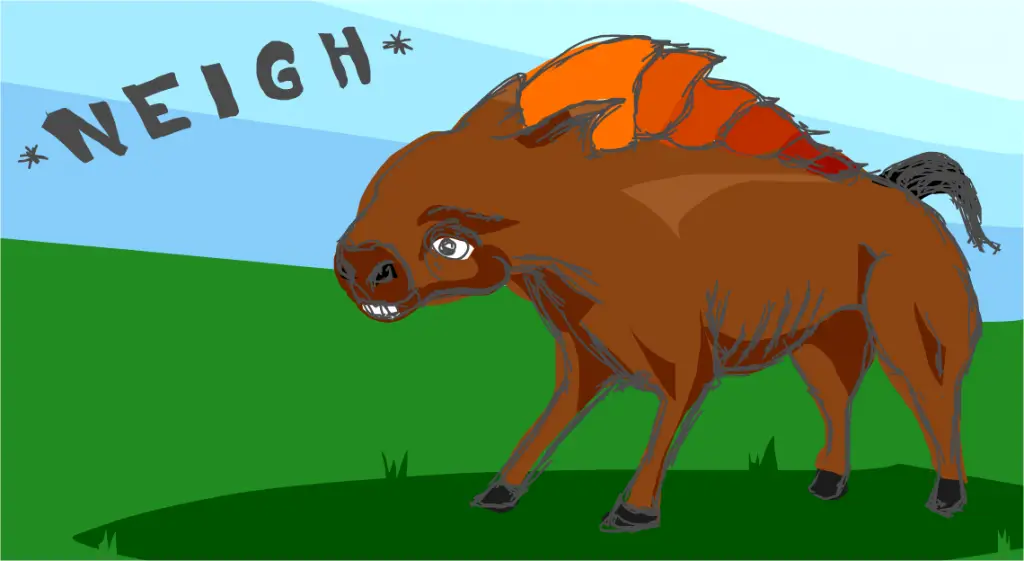Horses are some of the most beloved animals in the world. They can be found in books, movies, video games, and as cuddly stuffed animals.
You’re most likely familiar with horses, but there’s probably a lot about these animals you don’t know. Let’s find out!

What do horses look like?
Horses are classified as ungulates (mammals with hooves). There are over 400 breeds of horses.
In general, horses are about 30-69 inches tall at the shoulders and weigh between 120 and 2,200 pounds.
Horses have muscular bodies and long, thick necks. Short hair covers most of a horse’s body, but they have long, silky hair in their tails and manes.
Horses also have the largest eyes of any land mammal. Their eyes are located on the sides of their heads and can move independently.
This gives horses nearly 360-degree vision. However, they have blind spots directly behind and directly in front of them.

Horses come in a variety of colors. These include brown, black, white, red, golden, and gray. Horses can also have patterns and spots instead of a solid coat.
Where do horses live?
Today, horses are found on every continent except Antarctica. It is believed that horses first lived in North America, then spread to Asia and Europe.
Horses were first domesticated in Asia many years ago. They were used for milk, meat, and animal transportation.
After being domesticated, horses gradually spread around the world.
Although horses are usually owned by people and found on farmland and pastures, there are still horses running free in various areas worldwide.
What do horses eat?
Horses are herbivores, meaning they eat only plants. In the wild, horses mostly eat grass. Domesticated horses also eat hay, oats, barley, and bran.
To get more nutrients, many domesticated horses are also given blocks of salt or minerals to lick.
Most horses eat one or two percent of their body weight each day. To get enough food, horses must graze many times throughout the day.

Horse behavior
In the wild, horses live in herds of three to 20 animals. Each herd is led by a stallion (mature male) and includes mares (females) and their foals (baby horses).
When male foals are about two-years-old, the stallion chases them away from the herd.
The young males then form their own herd until they can find females to lead.
Mares are pregnant for eleven months before giving birth to a foal. A mare gives birth to only one foal per year.
The foal can stand and even run soon after being born. It becomes mature around two or three years of age.
Horses can express emotions through movements of their ears and nostrils, as well as through facial expressions. They communicate through neighing and whinnying, whines, roars, and snorts.

They usually only sleep for three to four hours each day. This sleep does not happen all at once; they take naps of 10-15 minutes throughout the day.
Horse population size
The world horse population is estimated at around 58 million. That’s a lot of horses!
Still, there is only one type of truly wild horse. Most “wild” horses are the descendants of domestic horses who have roamed free for many generations.
The only wild horse who was never domesticated is the Przewalksi’s horse. The Przewalkski’s horse is considered critically endangered, with about 2,000 alive today.
Other Interesting Facts About Horses
- Domestic horses live for about 25 years.
- Horses have been involved in almost every documented war throughout history.
- Horses are distantly related to donkeys, zebras, and rhinoceroses.
- Horses can sleep lying down or standing up. When they sleep standing up, they “lock” their legs to keep from falling.
- Half of all the horses that run free in the United States live in Nevada.
- Usually, horses can gallop up to 42 miles per hour. The fastest horse speed ever recorded was 55 miles per hour.
- A horse’s heart weighs between nine and 10 pounds and is about the size of a basketball.
- Horses can breathe only through their noses, not through their mouths.
- A male foal is called a colt. A female foal is called a filly.
- Horses drink about 25 gallons of water a day.
- Horses’ ears can turn in different directions to help them hear better. They have heightened senses of hearing, smell, taste, touch, sight, and perception.
More Animal Facts.